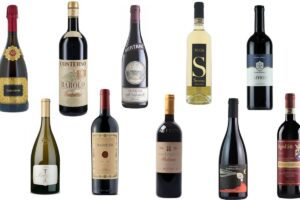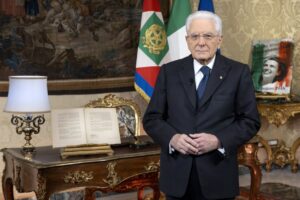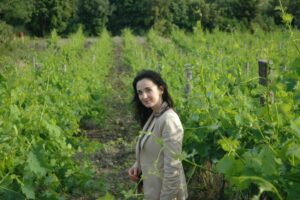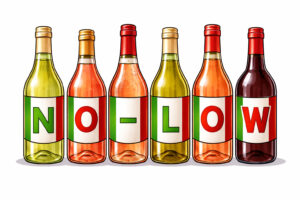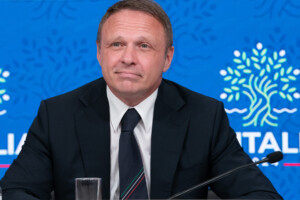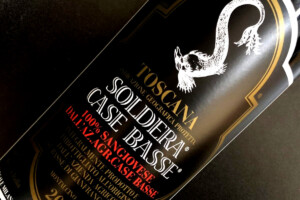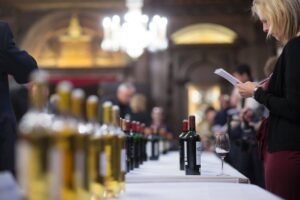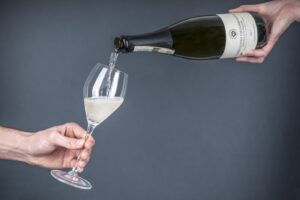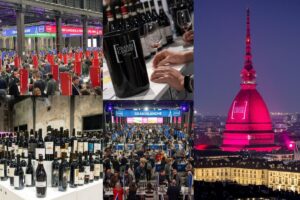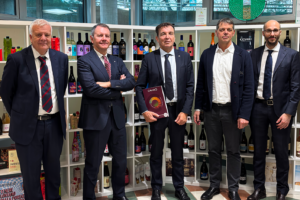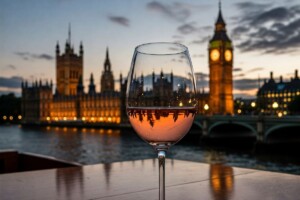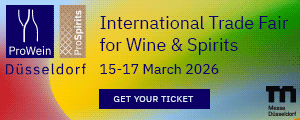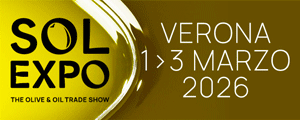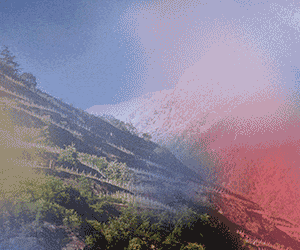The value of one hectare of land cultivated for Brunello wines has increased by 2153% over the forty years since the founding of the Brunello di Montalcino Consortium. An impressive run that has witnessed the arrival of Montalcino vineyards among the most prestigious wines of the world (with an increase in value of 23 times that of its worth in 1967). In 1967, in fact, when the Consortium had just been founded, one hectare of Brunello vineyards was worth 1.8 million lire, equal to about 15,537.15 euros (this equivalent was obtained using the Istat calculation of coefficients for the creation of values in 2006). Today, one hectare of Brunello vineyards is worth 350,000 euro. In 1977, one hectare (buildings and vineyards included) was worth 3.5 million lire, roughly double that of the previous decade (the equivalent, again using Istat conversion coefficients, would be 11,730.60 euros).
But this most considerable increase is that of 1987, when a hectare of Brunello jumped to a value of 50 million lire (equal to about 50,140.22 euro), which is just about 5 times its value in 1977. This sudden and decisive jump can be explained with the arrival in Montalcino of some of the biggest names in Italian winemaking (like Banfi, Antinori and Frescobaldi), who, from the mid 80’s to the beginning of the 90’s began to establish their dependances among the hills of Montalcino. A trend that continued to rise throughout the following decade as well. In 1997, one hectare of Brunello was worth 150 million lire (the Istat equivalent coming to 93,667.21), almost twice as much as the value registered in 1987,. These are important sums that demonstrate a truly impressive growth rate, even when taken into consideration with the increase in the cost of living with the introduction of the euro. It is a confirmation of the role of primary importance that Brunello di Montalcino has conquered over a relatively short period of time not only in Italy but around the globe.
Even Ezio Rivella, the enologist who has built his successful career in Montalcino and has one of the most lucid historical memories of this territory, was surprised upon analyzing the above data: “I had never tried to line them up” – began Rivella – but, organically, these numbers are truly impressive. When John Mariani commissioned me for the first study on feasible enological projects, we rejected both California and Australia, where land was considerably more expensive than in Montalcino. We really believed in this territory, but we obviously could not have imagined a success of this measure”.
But in the past, the situation of the “capital” of Brunello, was not so prosperous. Between 1955 and 1970, Montalcino entered into a profound economic and social crisis, becoming one of the poorest areas in the province of Siena, where the shortage of work caused a worrisome decline in the resident population (according to Istat data, the total population went from 10,203 in 1951 to 6,297 in 1971). And it was precisely in this difficult period that Montalcino decided to place its bets on wine, by taking literally the Latin proverb “ex vite vita”. An entire municipality that was in dangerous decline then became one of the most important places in Italy, and not only. It is also the perfect example of the virtuous cycle between territory, economy, and society. And the emblem of this success is the Brunello di Montalcino Consortium.
Created in 1967, by a meager 37 founding members (12 of whom were bottlers), it continuously reaped a notable success over its 40 year history, demonstrated by its ever growing number of associates (in 1977 there were 74, 38 of whom were bottlers; in 1987, 111 associates, out of which 74 were bottlers; in 1997, 183 associates, 129 of whom bottlers), and, today, associates include 100% of Brunello producers (a good 247, 208 of whom are bottlers). A unique example in Italy, it is a solid and fundamental point of reference for all winemakers of the territory, from the smallest to the biggest, from the most antique to the most modern, without exceptions.
But Montalcino, has, evidently, also grown notably in size in terms of vineyard land dedicated to the cultivation of Brunello, going from 64.58 hectares of Brunello in 1967 (for a production of 2,077 hectoliters of wine), to 411.66 hectares in 1977 (for a total production of 17,679 hectoliters of wine), to 1,245.94 hectares in 1997 (for a total production of 59,758 hectoliters. Source: Brunello di Montalcino Consortium).
Stefano Campatelli, director of the Brunello di Montalcino Consortium, has led the consortium for 17 years and recalls his debut: “I began on March 19, 1990 and immediately perceived a grand movement, above all in regards to viticulture. Many vineyards were planted and many of the old vineyards were substituted with new ones. A necessity connected, above all, to the need for awareness of what was being created, that in the viticulture of the 70’s and 80’s had little to do with the concept of quality. In short, the general trend was looking towards improvements”.
In effect, the true Brunello di Montalcino “boom” occurred with the commercialization of the 1990 vintage, that is, in 1995. It was the vintages from the 90’s, in fact, that represented the decisive passage from the “Medieval” period for Montalcino to its “Renaissance”. Evidently, even before this decade there were producers of great wines. In fact, there were some whose greatness is still difficult to equal even today. Nevertheless, in that period, it was the coincidence of a great harvest or a bit of fortune, that often determined whether a wine became great or not. During the 1990’s, however, it became more widespread among Brunello producers, the awareness, the consciousness and the ability to reach goals without any more uncertain references to quality.
Today, the massive work involved with Sangiovese, has already given beautiful results, but the notable margin of improvement for the future, which the cultivation in Montalcino seems to be destined towards, makes one imagine, with hardly any doubts, results that will be even more extraordinary.
Copyright © 2000/2026
Contatti: info@winenews.it
Seguici anche su Twitter: @WineNewsIt
Seguici anche su Facebook: @winenewsit
Questo articolo è tratto dall'archivio di WineNews - Tutti i diritti riservati - Copyright © 2000/2026












